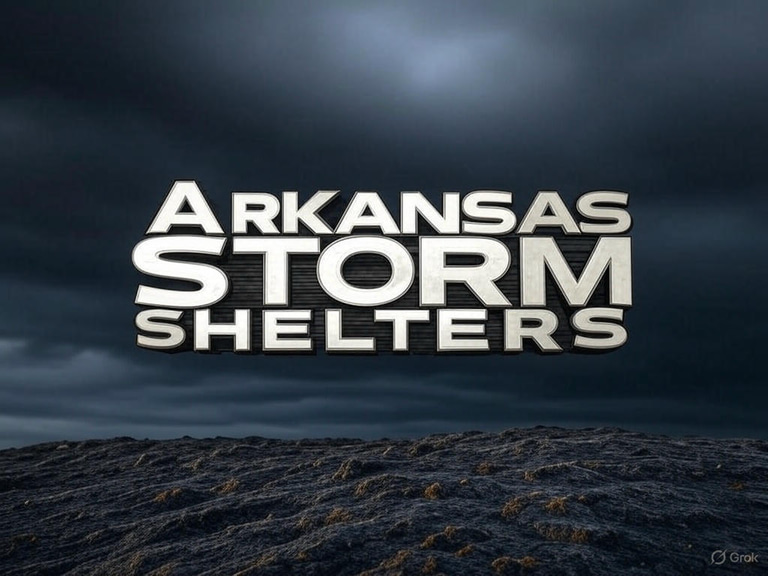Arkansas Tornado Risk by City (2025) — Should You Install a Storm Shelter?
Discover the 10 Arkansas cities most at risk for tornadoes in 2025. Learn local risks, storm history, and whether you need a storm shelter today.
WEATHER EDUCATION & PREPAREDNESS
10/6/20253 min read
Top 10 Arkansas Cities Most at Risk for Tornadoes — Do You Need a Storm Shelter?
Arkansas is no stranger to tornadoes. Located in the heart of “Dixie Alley,” the state experiences frequent and powerful storms, especially in spring. If you live in Arkansas, you’ve probably wondered: Is my city at high risk, and do I really need a storm shelter?
In this guide, we break down the top 10 Arkansas cities most at risk for tornadoes in 2025, based on storm history, geography, and National Weather Service data. We’ll also explain how to decide if a storm shelter or safe room is the right move for your family.
1. Little Rock
Why it’s high risk: As the largest city in Arkansas, Little Rock’s dense population makes tornado impacts especially dangerous. Tornadoes frequently cut through Pulaski County, and the city has seen EF3+ storms in the past.
Recent history: The March 31, 2023 EF3 tornado caused major destruction across Little Rock and North Little Rock.
Recommendation: Homes without basements should consider above-ground safe rooms or in-garage shelters for accessibility.
2. North Little Rock
Why it’s high risk: Tornadoes often track across both Little Rock and North Little Rock due to the shared metro area.
Special concern: Mobile home parks and older housing stock in North Little Rock are particularly vulnerable.
Recommendation: Community safe rooms are important here — residents should check if local schools and churches open their facilities.
3. Conway
Why it’s high risk: Conway sits in a corridor that frequently sees supercell thunderstorms moving northeast from central Arkansas.
Storm history: The 2011 Vilonia EF4 tornado just east of Conway devastated homes and businesses.
Recommendation: Because of growth and suburban spread, homeowners should prioritize in-ground shelters for new builds.
4. Jonesboro
Why it’s high risk: Northeast Arkansas is tornado-prone, and Jonesboro’s rapid growth has expanded into vulnerable areas.
Storm history: The 2020 EF3 tornado ripped through Jonesboro, causing massive property damage.
Recommendation: Consider above-ground steel safe rooms if flooding is a concern.
5. Fort Smith
Why it’s high risk: Western Arkansas is no stranger to severe weather; Fort Smith often sees storms moving in from Oklahoma.
Storm history: In 1996, a deadly tornado struck downtown Fort Smith, killing two and injuring dozens.
Recommendation: Retrofits are possible — existing basements can sometimes be reinforced into compliant safe rooms.
6. Bentonville / Rogers
Why it’s high risk: Northwest Arkansas has experienced increased severe weather events, and population growth means more exposure.
Storm history: While not as frequent as central AR, Benton and Washington Counties have seen EF2+ tornadoes.
Recommendation: New construction buyers should ask builders about pre-installed safe rooms, as incentives are sometimes available.
7. Searcy
Why it’s high risk: White County has had multiple destructive tornadoes, including deadly events in the late 20th century.
Storm history: Tornadoes repeatedly track near Searcy due to its location in central Arkansas.
Recommendation: A small, prefabricated shelter is affordable for families in rural areas with limited nearby public shelters.
8. Cabot
Why it’s high risk: Fast-growing Cabot sits northeast of Little Rock, directly in a corridor of recurring tornado activity.
Storm history: Severe tornadoes in Lonoke County have destroyed homes and mobile parks.
Recommendation: In-garage shelters are especially popular here for new subdivisions.
9. Pine Bluff
Why it’s high risk: Pine Bluff and Jefferson County are vulnerable due to flat terrain and frequent storm tracks.
Storm history: Pine Bluff has had multiple EF2–EF3 tornadoes since the 1990s.
Recommendation: Local residents should also be aware of community shelter maps — check with Jefferson County Emergency Management.
10. Hot Springs
Why it’s high risk: Garland County, while less hit than central AR, has experienced deadly tornadoes. Tourism and mobile housing increase risks.
Storm history: Multiple EF2–EF3 tornadoes in recent decades have caused loss of life and property.
Recommendation: Vacation homeowners and lake properties often benefit from small-capacity safe rooms.
How to Decide If You Need a Shelter in Arkansas
Do you have a basement? If not, a storm shelter is strongly advised.
Do you live in a mobile home or manufactured housing? Always unsafe during tornadoes — a shelter is a must.
Do you live in a high-risk corridor? (Central AR, northeast AR, western AR) — consider at least an above-ground safe room.
Can you reach a public/community shelter in under 5 minutes? If not, a personal shelter is safer.
Frequently Asked Questions
Q: Which part of Arkansas has the highest tornado risk?
Central and northeast Arkansas see the most tornado activity, especially Pulaski, White, Faulkner, and Craighead counties.
Q: Are above-ground storm shelters safe?
Yes. FEMA-approved above-ground safe rooms, when built to ICC 500 standards, are tested against EF5 winds.
Q: How much does a storm shelter cost in Arkansas?
Most shelters cost $5,000–$10,000 installed, depending on size, material, and location.
Q: Does Arkansas have public storm shelters?
Yes, but availability varies by county. Many are located in schools, churches, and community centers. Always check your county’s map before severe weather season.
© 2025. All rights reserved.
ARStormShelters.com is your trusted resource for staying safe during severe weather. We offer comprehensive information about tornado shelters and help connect you with reputable installers and providers throughout Arkansas. Please note, we do not sell or install storm shelters ourselves.
